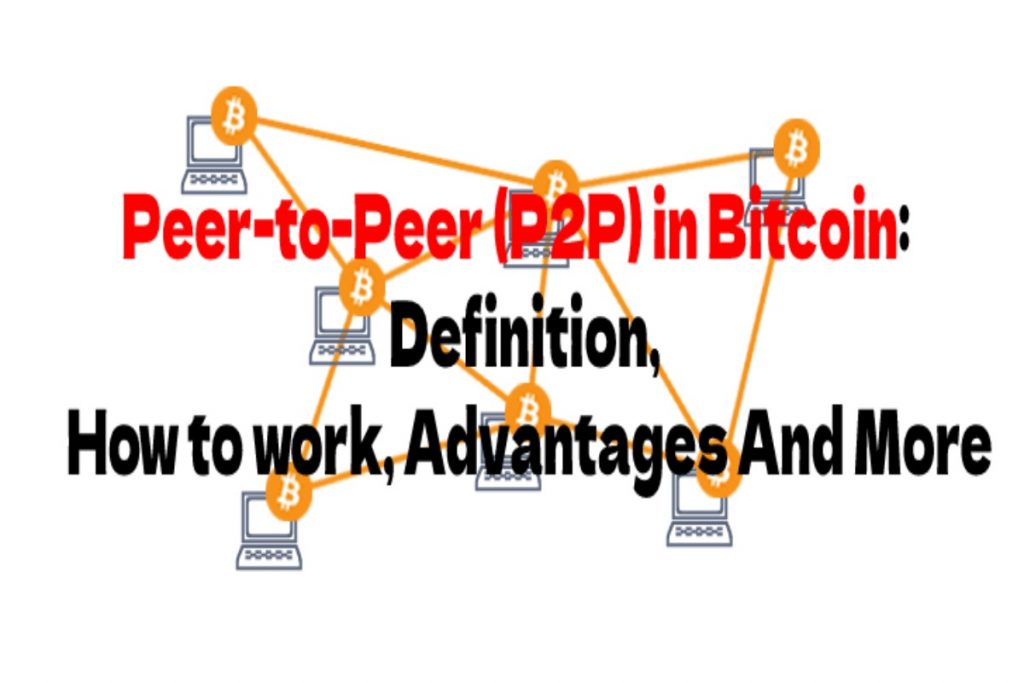To describe Peer-to-Peer (P2P) in Bitcoin in its early stages, Satoshi Nakamoto coined the phrase “Peer-to-Peer Electronic Cash System.” Bitcoin is a digital currency created in the form of a computer programme. It can be transferred from one client to another via a peer-to-peer network that uses a blockchain as a shared ledger. Blockchain technology’s peer-to-peer design enables the global transmission of Bitcoin and other cryptocurrencies without intermediaries or database controllers.
As a result, no banks in the Bitcoin system make or document payments. Instead, each node maintains a blockchain and compares it to data from other nodes to ensure accuracy. In addition, the system rejects any malicious or inaccurate action.
Nodes can play several different roles on the bitcoin blockchain. Network nodes, for example, are responsible for operational security by confirming activities against program consent rules.
Also Read: Asset Tokenization – Definition, Concept, Characteristics, Advantages
Table of Contents
How Does A Peer-To-Peer (P2P) Exchange Work?
Diving deep into P2P trading systems, it works as a bridge connecting buyers and sellers of cryptocurrencies. In a nutshell, these marketplaces are often compared to marketplaces like Craigslist or Facebook Market. Traders can search for cryptocurrency listings or create their own. Although learning more about P2P exchanges, the platforms also provide a level of protection for every investor involved in every cryptocurrency transaction.
For example, let’s say a person you recently met is looking to buy Bitcoin through any social media platform. In this case, if you have Bitcoin to offer, you should be aware that Twitter is not a peer-to-peer site, and it is challenging to build trust. In these cases, imagine if a buyer receives Bitcoin but does not deliver the payment; what would happen then? What happens if the buyer sends less cash than expected? P2P trading without a middleman is the most considerable fraudulent activity.
Advantages Of Peer-To-Peer Technology In The Blockchain System
Peer-to-peer blockchain technology offers numerous benefits. One of the most significant advantages is that networks are more secure and reliable client-server systems. Because blockchains will distribute across many nodes, they are highly resistant to denial of service (DoS) threats that affect many networks.
Similarly, since network participants must agree before uploading data to a blockchain, it is difficult for an attacker to change it. It is essential for large systems like the Bitcoin network. As an individual or organization could eventually take control of a portion of the nodes, tighter blockchains are more prone to damage.
One of the explanations that Bitcoin (and other blockchains) could achieve Byzantine fault tolerance is the P2P model.
In addition to security, P2P design in bitcoin blockchains makes them resistant to central authority censorship. Censorship measures by private money and content processing companies are also meeting resistance. Some content creators and online merchants have accepted payments in CryptocurrencyCrypto currency to avoid having their costs restricted elsewhere.
Limitations
Because must keep records on each node rather than on a centralized computer, uploading transactions to a blockchain requires a lot of computing power. While this improves security, it significantly impacts performance and is one of the most significant barriers to scaling and widespread adoption. Blockchain engineers and Cryptographers, on the other hand, are looking for new ways to grow their businesses.
Furthermore, distributed systems, not only in the blockchain space, are difficult to track and regulate due to their decentralized nature. As a result, various peer-to-peer (P2P) programs and companies will implicate copyright and misbehaviour issues.
Conclusion
Peer-to-peer infrastructure can will build and used in a variety of ways. However, the spirit of blockchain skills enables the creation of cryptocurrencies. The P2P design offers protection, decentralization, and censorship resistance by spreading books and event logs across vast networks of nodes.
P2P networks can use for various distributed software purposes, from file-sharing platforms to power-sharing systems, instead of distributed ledger technology.
Also Reda: What Is Litecoin, Understanding, And Differentiates Litecoin From Bitcoin

Review Peer-to-Peer (P2P) in Bitcoin: Definition, How to work, Advantages And More. Cancel reply